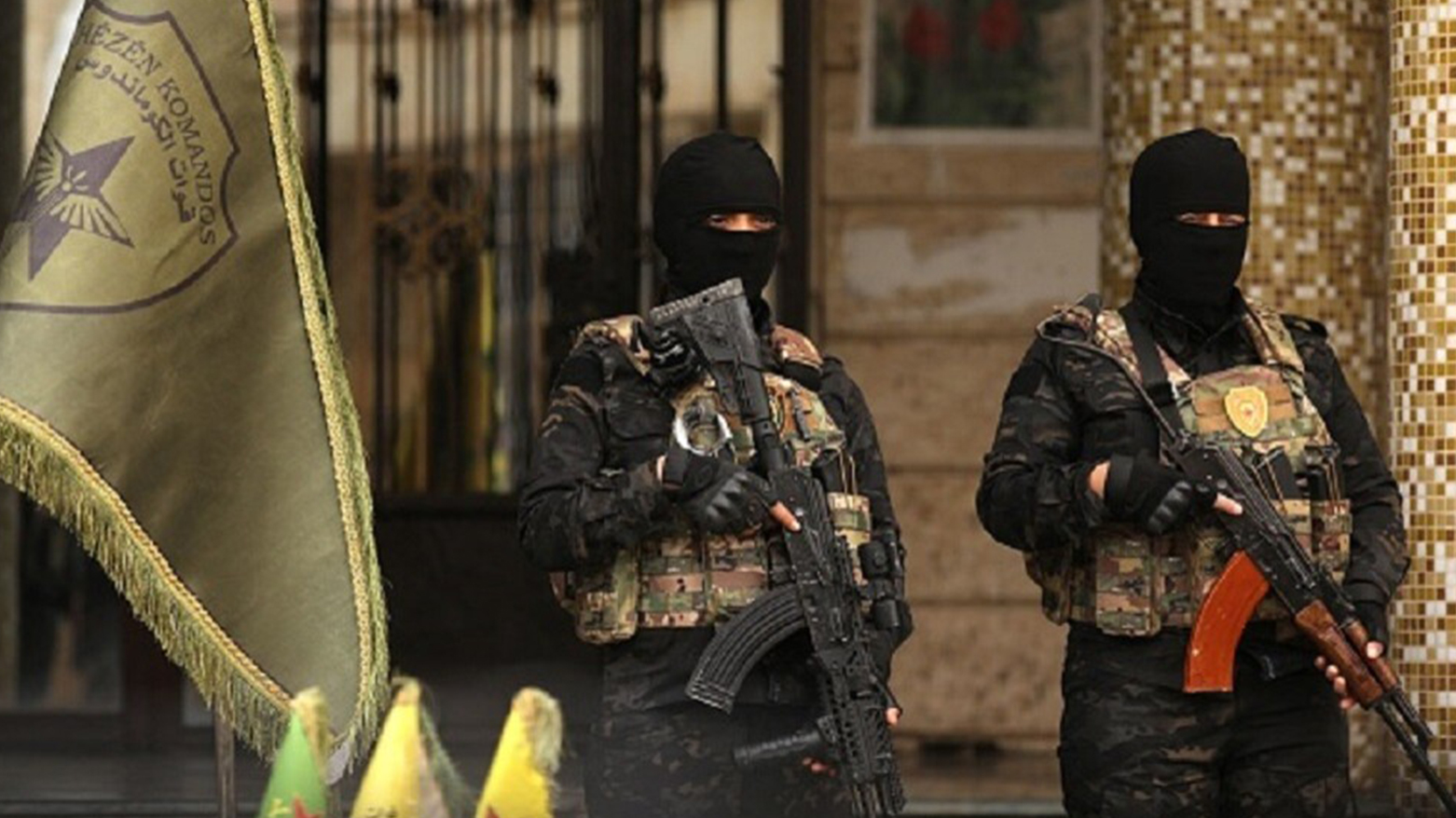First convoy leaves for Rojava as Damascus, SDF implement historic agreement
“Internal Security Forces (Asayish) would maintain a limited presence in coordination with Syria’s Ministry of Interior, placing responsibility for future violations on Damascus,” said Badran chia Kurd

By Ahora Qadi
ERBIL (Kurdistan24) – The first convoy of Syrian Democratic Forces (SDF) fighters began its withdrawal from Aleppo on Friday, marking the initial phase of a landmark agreement between the Kurdish-led forces and the transitional Syrian government.
According to Syria’s state-run SANA news agency, the SDF pullout was conducted in full coordination with the Syrian Ministry of Defense. The move comes as part of a wider accord signed last month aimed at restructuring military and civil authority under the auspices of the newly formed Syrian state.
At Sheikhan Roundabout near the Ashrafiyeh neighborhood in northern Aleppo, dozens of residents stood in solemn silence as military vehicles rolled by—some carrying detainees whose weary faces reflected years of detention and uncertainty.
This moment marked more than a military maneuver: it was the beginning of an unprecedented prisoner exchange between the SDF and Damascus, carried out under the terms of what officials describe as a "historic agreement."
Colonel Mohammed Abdul Ghani, Director of Internal Security in Aleppo, in an official statement said that the first phase included the release of more than 200 detainees from both sides. He described the exchange as “the beginning of a complete cleansing of prisons,” adding that the process was achieved through “purely Syrian efforts” and blessed by both interim President Ahmad al-Sharaa and SDF Commander-in-Chief Mazloum Abdi.
Although the SDF and the Autonomous Administration have yet to issue formal statements, local sources confirmed that the Syrian government released approximately 100 detainees, with additional releases expected in the coming days. According to official estimates, the total number of detainees to be exchanged exceeds 600.
Reclaiming Ashrafiyeh and Sheikh Maqsoud
Beyond the prisoner swap, the agreement addresses one of Aleppo’s most sensitive issues: the future of the Kurdish-majority neighborhoods of Ashrafiyeh and Sheikh Maqsoud, which have remained under SDF control since 2015.
Despite Damascus reasserting military presence across much of Aleppo in late 2024, the two neighborhoods remained a flashpoint. Sporadic clashes and sniper attacks were documented by the Syrian Network for Human Rights, which reported the deaths of 65 civilians—including a child and two women—within just two months.
Earlier this April, a 14-point accord was signed between the Presidential Office and the Civil Council of the two neighborhoods. Key provisions include the phased withdrawal of SDF fighters, the disarmament of local militias, the establishment of civil coordination committees, and the facilitation of prisoner exchanges.
According to Aleppo’s Deputy Governor, Ali Hanoura, the local agreement is a direct extension of the broader March 10 accord between al-Sharaa and Abdi, which calls for integrating Kurdish military and civil institutions into the Syrian state—an unprecedented step since the onset of the conflict.
Towards shared governance
The agreement also stipulates the appointment of local administrators, preservation of the neighborhoods’ cultural and social identities, reopening of local crossings, amnesty for nonviolent actors, and fair representation of residents in regional institutions.
Badran chia Kurd, advisor to the Autonomous Administration, welcomed the accord, calling it “an important step toward stability and coexistence.” In a statement on platform X, he confirmed that the Internal Security Forces (Asayish) would maintain a limited presence in coordination with Syria’s Ministry of Interior, placing responsibility for future violations on Damascus.
Colonel Abdul Ghani confirmed that the agreement took immediate effect following its signing. In the coming days, more detainees are expected to be released, military withdrawal from Sheikh Maqsoud and Ashrafiyeh will continue, and local governance structures will be activated.
A model for future cooperation?
While the deal is undoubtedly political and military in nature, analysts view it as a potential breakthrough in bridging the gap between the Syrian government and the Kurdish administration. In a region where alliances are fragile and territorial control complex, this agreement could serve as a template for future arrangements—particularly in northeast Syria—under a broader framework of national reintegration.
